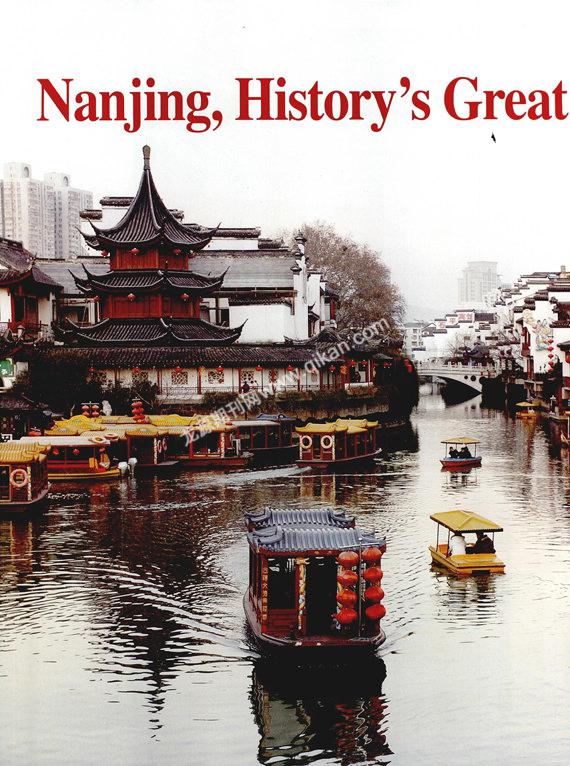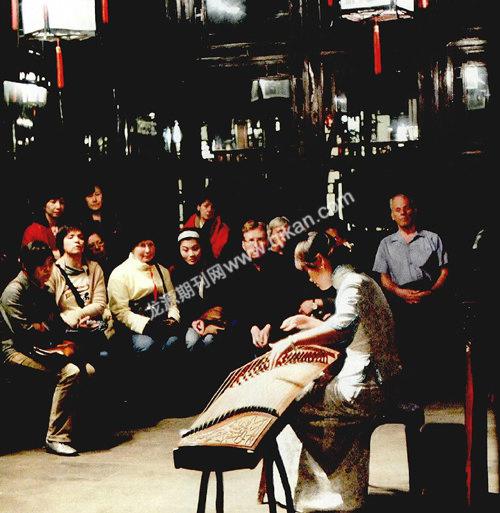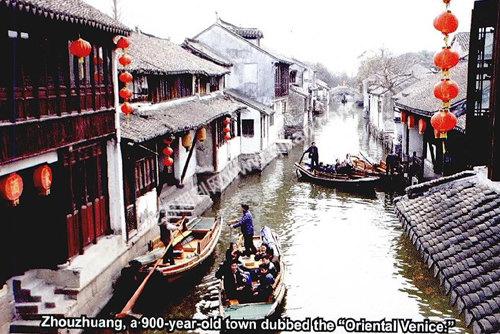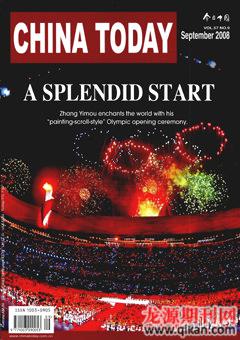Nanjing,History’s Great Survivor
ZHANG XIWEN
PERHAPS no other city in China suffered more during the Second World War than Nanjing. Although traditionally protected by the Yangtze River and Zijin Mountain to its north and east, the city quickly fell to Japanese invaders in 1937, with tragic consequences. In what became known as the “Rape of Nanjing,” 330,000 men, women and children were systematically and brutally murdered by rampaging Japanese soldiers in a six-week-long orgy of violence.

Strategically important from Chinas earliest history, Nanjing was the countrys capital through six dynasties, as well as the seat of power during four short-lived regimes, and as such had experienced repeated sieges since it was made the capital of the State of Wu in the third century. Contemporary military historians continue to debate why such a well-protected city was so easily sacked time and again.
When Emperor Zhu Yuanzhang established the Ming Dynasty in Nanjing in 1368, the city became the countrys political center for the first time. He ordered the citys walls built 14-21 meters high to enclose an inner city within a 33-kilometer perimeter, making it the worlds largest urban center of the day. To further protect his capital, Zhu built an outer city with a 60-kilometer perimeter, but only four years after its completion, his grandson, Emperor Zhu Yunwen, was overthrown by his uncle Zhu Di, the fourth son of Zhu Yuanzhang. Ironically, many historians have concluded that the citys impressive defenses and its favorable strategic placement were in themselves responsible for its fall, as its inhabitants had grown overconfident and careless.

In an earlier age, Chen Shubao, emperor of Chen during the Southern Dynasties period (420-589), had suffered a similar fate. An irresponsible and pleasure-loving monarch, he ignored his military advisers warnings as invaders closed in, incorrectly assuming that the Yangtze River rendered his capital impregnable. He paid for his complacency and was taken prisoner by Emperor Wendi of the Sui Dynasty, dying in captivity in 604.
Still, in times of peace Nanjings prosperity and stability fostered a rich cultural life. During the fifth and sixth centuries, four major institutes of Confucianism, metaphysics, liberal arts and historiography were established in Nanjing. During this period, a number of classic works of literature were penned, and Nanjing was home to many noted scientists and writers, such as Zu Chongzhi, Wang Xizhi and Gu Kaizhi. At the time, Nanjing was also an important center of Buddhism.

Today, 33 stone carvings on ancient tombs can be found in and around the city, and according to scholars the works are unique in their depiction of worldly elegance, portraying a voluptuousness seldom seen elsewhere. Thankfully, the citys glorious history has been well-preserved, and modern visitors can still experience some of its former magnificence.

The Qinhuai River, a branch of the Yangtze River, is Nanjings principal waterway. It was turned into the citys busy business district in the third century as shops were built along its course, and since the fifth century it has been home to some of Nanjings most distinguished families. To this day, numerous ships navigate the river day and night, and countless restaurants stand on both shores. The area fairly exudes a spirit of luxury and ease, evoking the golden age of the Ming and Qing dynasties. One particularly colorful event dating to the rule of Emperor Zhu Yuanzhang is the sight of thousands of small, bright lanterns floating down the river on special occasions.
The Qinhuai River
With the Confucian Temple at its center, this five-kilometer-long scenic spot includes Wuyi Alley and the Jiangnan Examination Office. The latter was built 300 years ago, and was the largest imperial civil examination venue in south China.

The Ming Xiaoling Mausoleum
The World Cultural Heritage-designated Ming Xiaoling Mausoleum is one of the largest imperial tombs in China. The first emperor of the Ming Dynasty, Zhu Yuanzhang, is buried here. The mausoleum is noted for its long “Sacred Way,” as well as its stone sculptured animals that guard the tomb. Its grand scale and stately buildings are representative of imperial mausoleums from the Ming and Qing dynasties. These days, the site is divided into two parts, with the eastern half containing cultural relics from the Republic of China, such as Sun Yat-sens mausoleum and memorial hall, the Linggu Temple, the Meiling Palace and the bandstand. The western half is devoted to the Ming Dynasty, and includes the Ming Xiaoling Mausoleum, Plum Blossom Hill and Valley, Purple Cloud Lake and the Red Mansion.
Opening Hours: 8:00 a.m. - 6:00 p.m.

Admission: RMB 60 to the Ming Xiaoling Mausoleum; RMB 80 to the eastern part; RMB 70 to the western part (including the Xiaoling Mausoleum); RMB 130 to both.
How to Get There: Take Tourist Bus 2 or 3.
The Sun Yat-sen Mausoleum
The Mausoleum of Sun Yat-sen, founder of the Republic of China, is located at the southern end of Zijin Mountain. Looking down from above, the mausoleum resembles a bell. The sculpture of Sun Yat-sen was done by the noted French sculptor Paul Arinsky.
Opening Hours: 6:30 a.m. -6:30 p.m.
Admission: RMB 40.
How to Get There: Take Tourist Bus 2 or 3.
The Memorial Hall to the
Victims of the Nanjing Massacre by Japanese Invaders
To commemorate 330,000 Chinese killed in Nanjing by Japanese troops in 1937, the memorial was built on the site of one of the execution grounds and mass graves of the victims.
Opening Hours: 8:30 a.m. - 4:30 p.m.
(Tue-Sun).
Admission: free-of-charge.
Site of the Former Presidential Palace
The 600-year-old building was the residence of a Ming Dynasty prince, and later became the seat of the Taiping Rebellion (1853-1864). In 1912, Sun Yat-sen set up the first Chinese republic and was inaugurated as its provisional president here.
Opening Hours: 7:30 a.m. -6:00 p.m. (summer), 8:00 a.m. -5:00 p.m. (winter).
Admission: RMB 30-40 (depending on the season).
Qixia Mountain
This famous scenic spot is situated 25 kilometers northeast of Nanjing City, and the Thousand Buddha Cliff is its premier attraction. According to historical records, there are a total of 294 niches and 515 statues of Buddha in different sizes and postures.
Opening Hours: 6:30 a.m. -5:30 p.m.
Admission: RMB 15.
How to Get There: Take a bus to Shangba or Qixia from Nanjing Railway Station.
Tips: It takes 40 minutes to reach Qixia from the city center, and visitors can picnic on the mountain.
Around Nanjing
Suzhou: One of the most famous tourist cities in Jiangsu Province, 219 kilometers from Nanjing. The classic gardens enjoy great renown at home and abroad. The largest among them is Zhuozhengyuan (Humble Administrators Garden), which is at the same time a World Cultural Heritage site.
Opening Hours: 8:15 a.m. -5:30 p.m.
Admission: RMB 70 (Apr. 16- Oct. 30); RMB 50 (Oct. 31- Apr. 15).
Tiger Hill is regarded as the symbol of Suzhou. The pagoda on the hill is called the “eastern Leaning Tower of Pisa.” Legend has it that Sword Lake is the gate to the mausoleum of a king from the Warring States Period (475-221 B.C.).
Opening Hours: 7:30 a.m. -6:00 p.m.
Admission: RMB 40-60 (depending on the season).
Zhouzhuang is 90 kilometers from Nanjing, 60 kilometers from Shanghai, and 38 kilometers from Suzhou. It is a quiet and beautiful town of rivers and lakes.
Tips: By visiting after 6:00 p.m., one canavoid tourist crowds.
Similar sites are Tongli and Luzhi. Tongli is 250 kilometers from Nanjing, 80 kilometers from Shanghai, and 18 kilometers from Suzhou. It was the hometown of a number of important government officials in ancient times, and as a result most of its streets and alleys were named after them. Tuisi Garden is especially well-known for its beauty.
Luzhi is 160 kilometers from Nanjing, 60 kilometers from Shanghai and 25 kilometers from Suzhou.
Yangzhou is a peaceful and quiet city situated 100 kilometers from Nanjing, 300 kilometers from Shanghai and 190 kilometers from Zhouzhuang. Its Slender West Lake is as beautiful as the renowned West Lake in Zhejiang Province. The name comes from its long and narrow shape. Ancient emperors were especially fond of it.
Opening Hours: 6:30 a.m. -5:30 p.m.
Admission: RMB 90 (Mar. 1-June 30; Sept 1-Dec. 1st), RMB 60 for other months.
Yangzhou is a paradise for relaxation. The aged Fuchun Teahouse offers Yangzhou specialties, and one must not miss the spa and the skillful pedicures offered there.
Eating in Nanjing
Xiaojinling Salted Duck: A time-honored restaurant that mainly offers its well-known dry-cured and salted duck.
Address: No.20 Boshan Street
Maxiangxing Restaurant: Noted for its shrimp, fish and dumpling since 1850.
Address: No.5 North Zhongshan Road
Wanqinglou: You can find all the famous Nanjing flavors here.
Address: Confucian Temple
Nanjing Food Court: Mainly offers Huaiyang Cuisine.
Address: No.2 Shiziqiao, Hunan Road
Confucian Temple Snack Street: Set meals range from RMB 60 to RMB 300. Waitresses here tell you the story of every dish during their service.
Shiziqiao Food Street: You can easily find it by looking for its logo of lions playing with a silk ball on the pedestrian Hunan Road.
Other food streets can be found at Xinjiekou, the Chaotian Palace, Changan Road and Shanxi Road.
Accommodation
Jinling Hotel: The oldest five-star hotel in Nanjing, it can be compared to the Jinjiang Hotel in Shanghai.
Rate: RMB 468 for a standard room (plus 15 percent service charge)
Address: Xinjiekou
Telephone: 025-84711888
Yuehua Hotel: A two-star hotel close to the Confucian Temple.
Rate: RMB 320 for a standard room.
Address: 127 Jiankang Road
Telephone: 025-52213888
Nanjing Hotel: A three-star hotel run by the Nanjing Tourism Bureau.
Rate: RMB 200-500 for a standard room.
Address: 259 North Zhongshan Road
Telephone: 025-86826666
- CHINA TODAY的其它文章
- BASIC CHINESE FOR THE BEIJING 2008 OLYMPIC GAMES
- Discover the Han Heritage in Xuzhou
- Seventy Years Later,James Hilton’s Shangri-la Rediscovered
- Innovation and Excellence:Tianjin University of Finance and Economics
- The Development of an Agricultural City
- The Pig Breeding Industry Benefits Anhui Farmers

